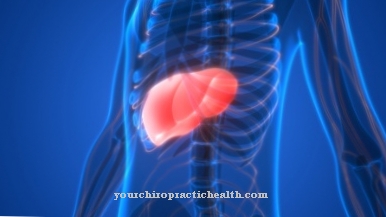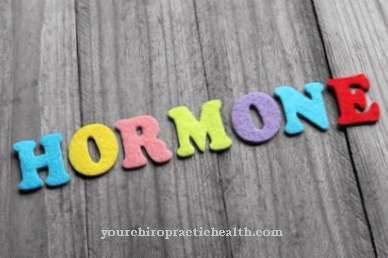Humans are equipped with various reflexes in order to be able to survive during pregnancy as well as during and after birth. This also includes the Moro reflex. This ensures the child's first breath after birth and serves as a startle reflex in the first few months of an infant's life.
What is the Moro Reflex?

The Moro reflex was first described and named by the German pediatrician Ernst Moro in 1918. This reflex is a reaction that is triggered quite involuntarily by a stimulus. The newborn child reacts to a possible threat, for example if it falls on its back or is suddenly and roughly put down.
The Moro reflex manifests itself in two phases. In the first phase, the child jerks out both arms and legs, opens their hands and spreads their fingers. It lays its head back so that the upper body falls slightly backwards. Then it opens its mouth to inhale and freezes briefly in this position. This is followed by the second phase with the withdrawal of arms and legs. It now clenches its hands into a fist, pulls its head to its chest and exhales. The child may then scream out loud.
The reflex is most pronounced in the first few weeks of a newborn's life. In the course of the next few months of life, the infant's nervous system matures, so that the frequency and intensity of the reflex decrease more and more. From the third month onwards it occurs less often and only in a very weak form and disappears completely after the sixth month of life at the latest.
The reflex has another meaning in ape juveniles. They are carried around by the mother all the time. As soon as the mother moves, the Moro reflex is activated in the ape cubs. They grip the nut very tightly and tilt the head back slightly so that they do not fall off the nut. For this reason, the Moro reflex is also known as Bracket reflex or Clasping reflex called.
Since this reflex also occurs in the first few months of human life, researchers of evolutionary biology suspect that we too were once carried.
Function & task
The Moro reflex is a highly complex reaction of the body that is activated by the interaction of all senses (sight, hearing, touch and balance). In humans, the Moro reflex already forms in the ninth week of pregnancy. Immediately after birth, it plays a vital role for the human child: it ensures that the windpipe is opened. In this way, it stimulates the newborn to take its first breath and protects it from suffocation.
In the course of the next months of life, the reflex also serves to admonish parents to be careful and tend to their newborns. After all, the child is not yet able to hold their head independently. And since the reaction seems like an uncontrolled movement and many babies cry out loud, the parents are often very frightened.
And the reflex is actually very uncomfortable for the baby, because the little body goes through a lot during this time: The stress hormones adrenaline and cortisol are released, the blood sugar level drops sharply and the heart rate rises rapidly. However, the reflex is a completely normal reaction of the body and is part of early childhood development.
Illnesses & ailments
If the Moro reflex is triggered very frequently in the first few months after birth, the body produces more stress hormones. These disrupt the infant's immune activity, which is not yet fully developed anyway. As a result of a weakened immune defense, infections or respiratory diseases occur more frequently.
From the fourth month of life, the Moro reflex should slowly regress. As part of the neurological development of the infant, it is replaced by the startle reflex, which is retained into adulthood. The following applies to the early childhood reflexes: They develop to the climax, then ebb and finally disappear.
With the regression of the early childhood reflexes, the gross and fine motor skills also mature. There are also reflexes that don't really go away, but rather are integrated into a more complex reflex.
Normally, the development of reflexes is the same for every child. The nervous system is only fully developed when the child has abandoned all early childhood reflexes within the first twelve months of life. However, if disorders occur during this development, the children can later develop neurological diseases such as ADHD and hypersensitivity.
Specifically, the developmental disorder of the Moro reflex can, for example, lead to the child initially spreading their arms when falling and the support reaction only starting later. It injures itself significantly more often than other children.
Due to the overproduction of stress hormones, they also absorb too much unnecessary information from their environment that they cannot process. The constant overstimulation can ultimately lead to concentration disorders and thus to poor social behavior of the children.
They also have difficulty behaving appropriately in new situations. Only a regular everyday life and a familiar environment can give them security. Even in adulthood, the restriction can persist, so that the life of those affected is partly characterized by panic attacks and anxiety neuroses.












.jpg)



.jpg)










.jpg)
